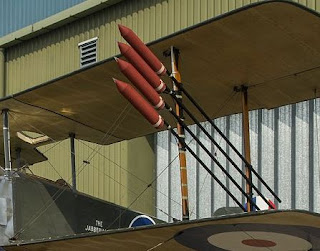Autumn (pronounced aw-tuhm)
(1) The season between summer and winter; also known as the fall and once known as the harvest. In the Northern Hemisphere it’s between the September equinox and the December solstice; in the Southern Hemisphere it’s between the March equinox and the June solstice.
(2) A time of full maturity, especially the late stages of full maturity or, sometimes, the early stages of decline.
1325–1375:
From the Latin autumnus, replacing
the Middle English autumpne (the
modern form of which dates from the sixteenth century) from the Middle French autompne, from the thirteenth century
Old French automne. The Latin autumnus
(also auctumnus, perhaps influenced
by auctus "increase") is of
unknown origin, some suspecting Etruscan root but a more supported view is a
meaning "drying-up season" with a root in auq-, comparing the archaic English sere-month "August." Interestingly, while “summer”, “winter” and
“spring” are inherited Indo-European words in Latin, a foreign origin of autumnus is conceivable as there is no
evidence for any similar etymology for “autumn"; indeed, autumn's names
across the Indo-European languages leave no evidence there ever was a common
word for it. Many "autumn"
words mean "end”, “end of summer" or "harvest" and variations
include the Greek phthinoporon (waning
of summer), the Lithuanian ruduo (autumn)
rudas (reddish) in reference to
leaves and the Old Irish fogamar (literally
"under-winter”). Harvest was the
English name for the season until autumn began to displace it during the
sixteenth century and “backend”, a once common name for the season in Northern
England, has been mostly replaced by autumn.
In the Romance languages, the Italian autunno, the Spanish otoño
and the Portuguese outono are all
from the Latin word. The only surviving
derived form is the adjective autumnal; the meaning "maturing or blooming
in autumn” dates from the 1570s, by the 1630s it had come to be used in the
sense of "belonging or pertaining to autumn" and by the 1650s, figuratively
as "past the prime". Autumn is a noun and adjective and autumnal is an adjective; the noun plural is autumns.
Lindsay Lohan at Petro Zilla show, Mercedes-Benz Fall 2004 Fashion Week, Bryant Park, Manhattan, March 2004.
Autumn dates from medieval times, examples existing as early as the twelfth century but it wasn’t until the sixteenth it was in common use, having supplanted the earlier “harvest”. Because it’s so much more evocative, the alternative word “fall” really is better than autumn. The exact derivation of fall is unclear, with the Old English fiæll or feallan and the Old Norse fall all possible candidates. The term came to denote the season in sixteenth century England, a contraction of Middle English expressions like "fall of the leaf" and "fall of the year" and it was seventeenth century English emigration to the American colonies which took “fall” across the Atlantic. While the term fall gradually became nearly obsolete in Britain (though there are signs of a twenty-first century revival), it became close to universal in North America. Season names are not capitalized in modern English unless at the beginning of a sentence or when the season is personified (as in Old Man Winter, Winter War, Summer Glau etc). This is in contrast to the days of the week & months of the year, which are always capitalized.
The fallen leaves: why "the fall" is so much more evocative that "autumn". However, the adjective autumnal remains indispensable because clumsy constructs like "fallesque" or "fallish" are ghastly.
Patterns of use of fall & autumn in US & British English. The twenty-first century trends are attributed to the influence of the internet.
Ode to Autumn (1819) by John Keats (1795-1821).
Season of mists and mellow fruitfulness,
Close
bosom-friend of the maturing sun;
Conspiring with him how to load and bless
With
fruit the vines that round the thatch-eves run;
To bend with apples the moss'd cottage-trees,
And fill
all fruit with ripeness to the core;
To
swell the gourd, and plump the hazel shells
With a
sweet kernel; to set budding more,
And still more, later flowers for the bees,
Until they think warm days will never cease,
For
summer has o'er-brimm'd their clammy cells.
Who hath not seen thee oft amid thy store?
Sometimes whoever seeks abroad may find
Thee sitting careless on a granary floor,
Thy hair
soft-lifted by the winnowing wind;
Or on a half-reap'd furrow sound asleep,
Drows'd
with the fume of poppies, while thy hook
Spares the next swath and all its twined flowers:
And sometimes like a gleaner thou dost keep
Steady
thy laden head across a brook;
Or by a
cyder-press, with patient look,
Thou
watchest the last oozings hours by hours.
Where are the songs of spring? Ay, Where are
they?
Think
not of them, thou hast thy music too,—
While barred clouds bloom the soft-dying day,
And
touch the stubble-plains with rosy hue;
Then in a wailful choir the small gnats mourn
Among
the river sallows, borne aloft
Or
sinking as the light wind lives or dies;
And full-grown lambs loud bleat from hilly bourn;
Hedge-crickets sing; and now with treble soft
The
red-breast whistles from a garden-croft;
And
gathering swallows twitter in the skies.
The English romantic poet John Keats wrote his best-remembered ode To Autumn after a stroll near Winchester one autumnal evening. Within a year of publication, Keats died in Rome.



















